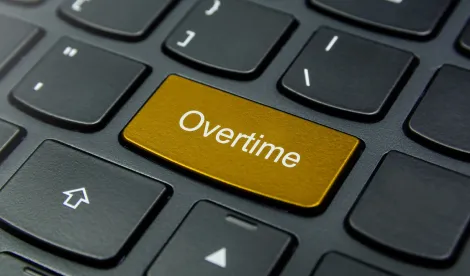It doesn’t seem that long ago that employers were busily preparing for the new overtime rule that would have doubled the minimum salary level for the “white collar” exemptions from $23,660 to nearly $48,000. That new rule—finalized in May 2016 and set to take effect on December 1 of that year—was struck down by a Texas federal court in late November 2016.
President Trump took office in January 2017, and the DOL—with less interest in so aggressively raising wages as the predecessor administration—pushed the pause button on revisions to the overtime rule. In public comments, however, Labor Secretary Alexander Acosta, who assumed the post in late April 2017, repeatedly indicated that he favors some increase in the minimum salary threshold for exemption, which was last raised in 2004 (and before that, in 1975).
In July 2017, the DOL began seeing public comment on a revised overtime rule, publishing a Request for Information in the Federal Register. The comment period closed in September 2017.
In its Spring 2018 Regulatory Agenda, the Trump Administration formally announced its intention to issue a Notice of Proposed Rulemaking (NPRM) in January 2019 “to determine what the salary level for exemption of executive, administrative, and professional employees should be.”
So what should employers expect in a new overtime rule? Likely an increase in the minimum salary for exemption to something in the low-to-mid $30,000s. This would be consistent with Secretary Acosta’s comments on the issue, but still considerably lower than the level proposed by the Obama Administration. It would also be significant lower than some state law minimum salaries for exemption (consider New York’s minimum for exempt executive and administrative employees, which will climb to $58,500 at the end of 2018).
Another thing we could see in a new overtime rule are more modern examples of how the various exemptions might apply in today’s workplaces. The DOL included a number of new examples in its sweeping revisions to the overtime exemption rules in 2004. It would make sense to revisit those examples, and to consider additional examples, given how the workplace has evolved in the last 15 years.
It’s also possible the DOL will depart from a one-size-fits-all salary minimum and propose different tests for smaller or non-profit employers. Small businesses, non-profits, and educational institutions were among the loudest voices in opposition to the 2016 overtime rule changes, and would be among the hardest hit by any increase in the minimum salary levels.
What I don’t expect from a new overtime rule are automatic future increases (which were part of the 2016 rule) or a change from a qualitative to a quantitative (e.g., California-style) primary duties test.
I also don’t expect any new overtime rule to take effect before 2020. Even assuming the DOL meets its expected deadline of proposing a new rule in January 2019, it will likely receive (and have to review) hundreds of thousands of public comments. (The DOL received more than 270,000 comments in response to the proposed overtime rule that was finalized in 2016.) In all likelihood, the DOL will give employers plenty of lead time to plan and prepare for any increases in the minimum salary for exemption. So for employers who are not subject to more stringent state rules around exemption, it’s likely you have at least a year and a few months before you’d have to implement any changes.



 />i
/>i

